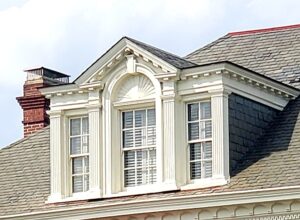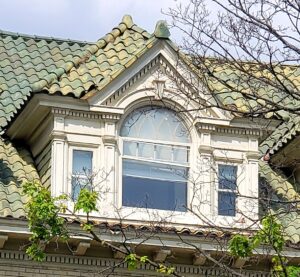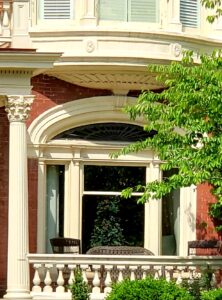Courtesy of Kathryn Oti – If you’re interested in reading more of her work, check out Kathryn’s blog.
Palladian windows are a beloved architectural element used on both residential and public buildings, and have been used by architects for centuries. The practical purpose is, of course, to let loads of natural light into a space, but Palladian windows are also very elegant and inspiring. A Palladian window has 3 sections, usually divided by engaged columns or pilasters. The center section is the largest, and has an arched section at the top, and flanked by two smaller, rectangular windows with flat tops. (A large, arched window by itself is not really a Palladian window)

The name comes from an Italian Renaissance architect, Andrea Palladio, (1508-1580) who is considered by historians as one of the most influential architects of western architecture. Palladio wrote a treatise on his influences and design ethos in ‘The Four Books of Architecture’, and is most known for his designs of Italian ‘villas’ a.k.a. country houses, which were built for the wealthy and important Italians of his time. Palladio’s primary influences came from ancient Greek and Roman builders, particularly Vitruvius, who we all know from the famous Leonardo da Vinci drawing Vitruvian Man (circa 1487) based on design proportions set forth by Vitruvius.

The Palladian window is sometimes called a Venetian Window or a Serlian Window, from another Renassaince architect named Serlio who probably first invented the form. Andrea Palladio employed this window design in numerous buildings, both residential and public. What can say, except that the man loved an arch.

Having spent a semester studying Palladian architecture, I happen to notice Palladian windows everywhere I go, sometimes in strange places (like a mall!) and in all kinds of variations.

Oh my! So, now that you know where the idea came from…have fun spotting Palladian windows everywhere!

